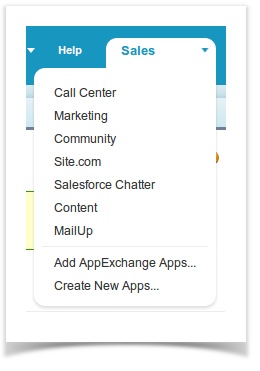Download your plugin from the following URL: https://login.salesforce.com/packaging/installPackage.apexp?p0=04ti0000000AlPi (version 1.23)
Info
If you are testing the package in a Salesfore sandbox organization, change the first part of the URL to http://test.salesforce.com
In the Package components page your will notice several information on which pieces will be added to your org, you can simply click on Continue.
Next: please authorize the communication between your MailUp console and Salesforce by selecting the appropriate checkbox and clicking on Continue.
You will then see a summary of the API access requirements for this package. Just click on Next to proceed.
You can then define the access levels for your different users' roles, select the desired granted level and click on Continue.
You have finally completed your configuration and can now click on Install.
And your MaiUp connector is ready to go and will be available amongst your installed packages:
Field configuration in your Salesforce layouts
To use your connector you will need some further configurations to happen.
Customize pages as MailUp: Set up sections and fields.
1) Access the Campaign PageLayout: at the left column of your Salesforce console, select Build > Customize > Campaigns > Page layout. To create a MailUp section, click Edit and select the MailUp button (already available in your fields and buttons lists). Drag it to the custom buttons area in the Campaign Detail section and save at the upper left corner.
Click on Edit, and select the Section button. Drag it to the area you want the MailUp section to appear (normally below Campaign Details section.)
A pop-up will appear to configure the section:
Name the section MailUp and select the 2-column option. (The tab-key order option is up to you.)
Now, create the following fields by dragging and dropping these buttons into the new section you've created and save. (See image below):
- MailUp total views
- MailUp total clicks
- MailUp total bounces
- MailUp total unsubscription
3) Follow the same process in your CampaignMember PageLayout section (Build > Customize > Campaigns > Campaign Member > Page Layout.) Create the MailUp section by dragging the Section button into the Campaign Details section, name it MailUp and save.
Create the various fields, again by clicking and dragging into the MailUp section you created:
- Views
- Clicks
- Bounced
- Unsubscribed
Console and fields mapping
Map your MailUp console with your Salesforce organization from the new tab Configuration.
Add the following data, click on Save and then on Activate console:
ConsoleID: enter your MailUp account ID without the "m" (eg: 12345)
MailUp Username: userID, with the letter "m" (e.g: m12345)
MailUp Password: enter your MailUp console password
Endpoint URL: the MailUp console URL (e.g.: http://b0x5a.s42.net, eliminate the end code - from the " / " onward.)
Warning
You can only associate 1 MailUp console with your Salesforce organization and this will be linked with 1 List only.
Any group or message that will be imported from Salesforce to your MailUp console will be available in the appropriate area of this list.
You will notice that the page where you just confirmed your console association will now show a new section: Schedule task
This section si meant to allow you to schedule a synchronization of your campaign statistic. These statistics will be retrieved, once a day at the time you prefer, for a month after you sent your message.
Let's associate your Salesforce contacts' and leads' fields with your Recipient fields included in MailUp, through the new tab Field Mapping.
Warning
You can start your first campaign now!










